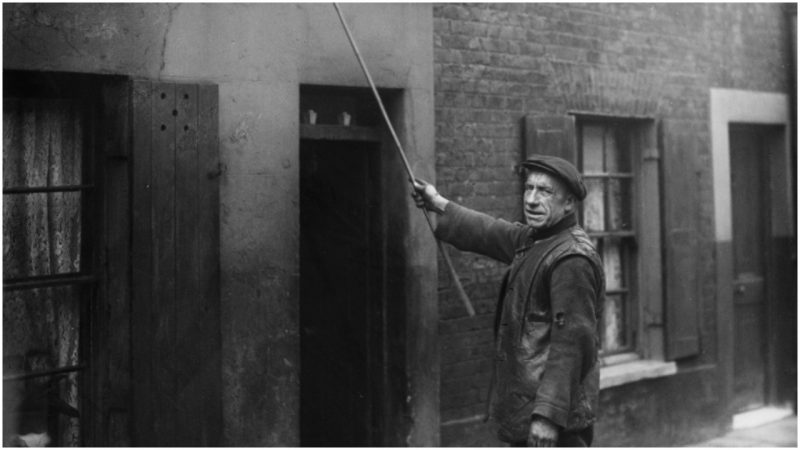The Industrial Revolution introduced the working class. As factories bloomed all over Great Britain, they employed more and more people whose daily routine included getting up early to go to work.
As anyone who’s worked the 9 to 5 schedule knows, getting up early isn’t easy. Before the alarm clock became a commodity, people actually hired their own knocker-uppers.
What is a knocker-upper?
First of all, a knocker-upper is one of the long-lost skills and trades that became redundant in the face of ever-developing technology. Throughout the 19th century, and partially the 20th, it was quite common for a person to come knock on your bedroom window at an arranged time to wake you up.
In some parts of England and Ireland, this line of work managed to survive until the 1970s, and it was a common sight among the early birds, or the ones who would go to bed during the first hours of the morning.
The profession was useful, especially to those who had to work early shifts, as they had to be up and running sometimes as early as three o’clock in the morning. This applied to the dock workers as well, for they sometimes had to wake up in the middle of the night, due to the shifting of the tide that dictated their working hours
At first, the knocker-upper would simply ring or rap on the door, but this was soon seen as impractical as it would wake up the entire household, together with the one it was intended for.
So, the use of a long stick with a knob at its end replaced this custom. As the bedroom would most often be located at the top floor of the house, this stick, which resembled the fishing rod, could reach the window and subtly wake up the worker, without causing everyone else to be interrupted from their sleep.
Many accounts were recorded about the knocker-uppers of England. Perhaps the earliest written mention of this specific profession came from the pen of Charles Dickens. In his 1861 novel Great Expectations, one of the characters, Mr. Wopsle, loses his temper over “being knocked-up” in the morning.
Another account, that of a lady who worked as a knocker-up for a number of years, was recorded in 1878 by a Canadian journalist who interviewed her for the Huron Expositor. She was already retired at the time the interview took place but still managed to provide an exquisite insight into the daily life of her trade.
Mrs. Waters served between 35 and 95 people, mostly in the period between five and six in the morning. She also recalls the bad temper of some of her customers who, like the Dickens’ character, just couldn’t hold their morning fury:
“There was one man in particular: he had to be up at five o’clock; he was given to drink, by the way; so that he was not only hard to awaken, but he never came to the window, but he indulged in angry mutterings, and I heard at times an oath slip out of his mouth.”
Mrs. Waters also spoke about how she would get paid a shilling per week by a single customer. The ones who would avoid paying their knocker would most often be left to dream on, and arrive late to work. It was always cheaper to pay a shilling a week than to lose a job, so such cases didn’t come often.
Some knocker-uppers used rather inventive methods to wake up their customers. Mary Smith reigned the streets of East London with her pea-shooter. She would aim at the windows with her flute-like instrument and shoot dried peas, achieving the needed amount of noise without carrying along an impractical stick around.
Mary had an heiress―a daughter of the same name―who took on the title of the knocker-upper once she retired.
As electricity became widespread and affordable alarm clocks came onto the market, the work of a knocker-upper was no longer needed. It remained a curiosity recorded in history, but it once was a truly necessary line of work ― one that kept everyone awake and ready for their job.
A tongue-twister was created in that honor, and it remained part of urban folklore:
We had a knocker-up, and our knocker-up had a knocker-up
And our knocker-up’s knocker-up didn’t knock our knocker up
So our knocker-up didn’t knock us up
‘Cos he’s not up.
The human alarm clocks of Victorian England are now only subjects of folk songs and period pieces. They serve as a reminiscence of a time so far away.
